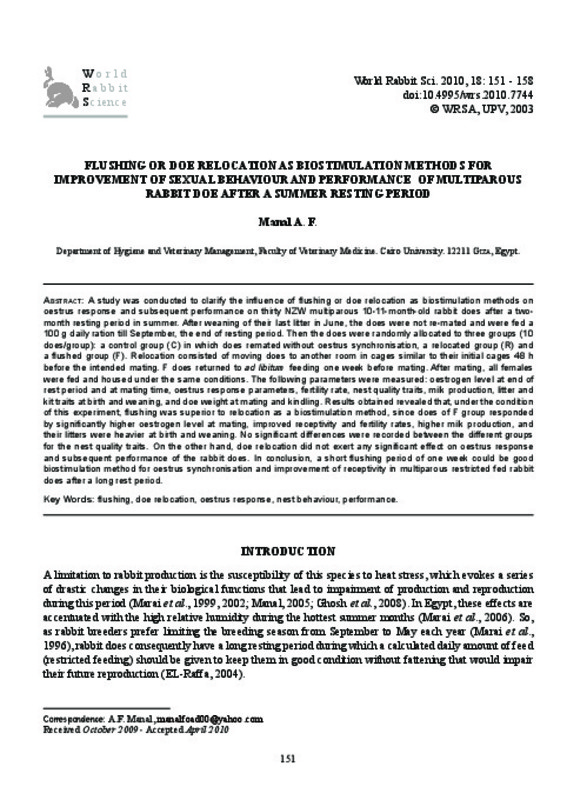JavaScript is disabled for your browser. Some features of this site may not work without it.
Buscar en RiuNet
Listar
Mi cuenta
Estadísticas
Ayuda RiuNet
Admin. UPV
Flushing or doe relocation as biostimulation methods for improvement of sexual behaviour and performance of multiparous rabbit doe after a summer resting period
Mostrar el registro completo del ítem
Manal, AF. (2010). Flushing or doe relocation as biostimulation methods for improvement of sexual behaviour and performance of multiparous rabbit doe after a summer resting period. World Rabbit Science. 18(3). https://doi.org/10.4995/wrs.2010.7744
Por favor, use este identificador para citar o enlazar este ítem: http://hdl.handle.net/10251/8946
Ficheros en el ítem
Metadatos del ítem
| Título: | Flushing or doe relocation as biostimulation methods for improvement of sexual behaviour and performance of multiparous rabbit doe after a summer resting period | |
| Autor: | Manal, A. F. | |
| Fecha difusión: |
|
|
| Resumen: |
[EN] A study was conducted to clarify the influence of flushing or doe relocation as biostimulation methods on oestrus response and subsequent performance on thirty NZW multiparous 10-11-month-old rabbit does after a ...[+]
|
|
| Palabras clave: |
|
|
| Derechos de uso: | Reserva de todos los derechos | |
| Fuente: |
|
|
| DOI: |
|
|
| Editorial: |
|
|
| Versión del editor: | https://doi.org/10.4995/wrs.2010.7744 | |
| Tipo: |
|








